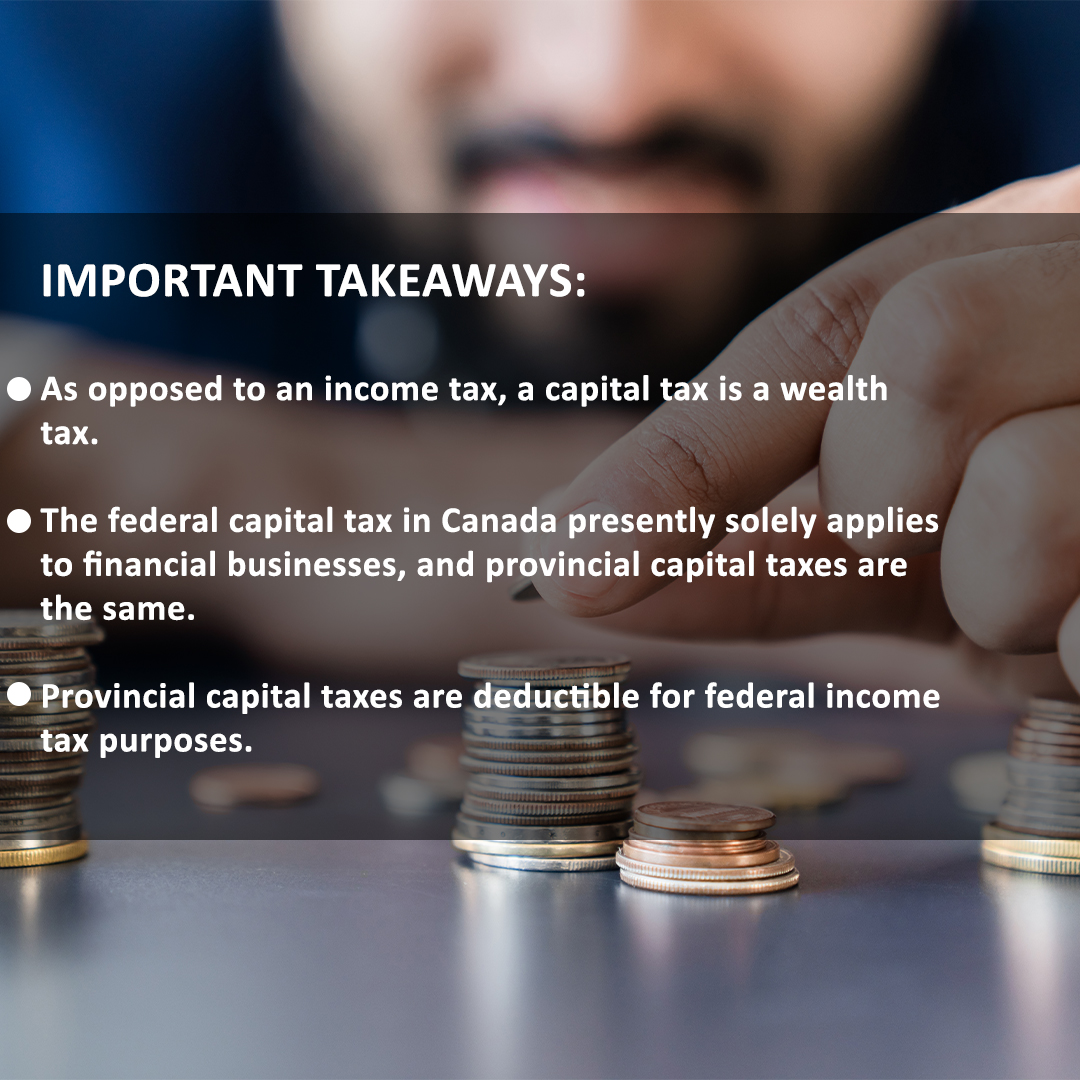A capital tax is a tax on a firm based on its assets rather than its profits. Few OECD countries to levy both federal and provincial capital tax. In 2006, several nations limited their federal capital tax to financial corporations, and some provinces additionally collected a capital tax on financial firms. The country’s capital tax calculates the total capital as the sum of its shareholders’ equity, long-term debt, retained earnings, and other surpluses. Financial institutions having taxable money employed more than $10 million must submit a capital tax form (Schedule 34), but only those with capital employed over $1 billion must pay the federal capital tax. The capital tax is also known as company capital tax (CCT).
Capital Taxes Explained:
A capital tax is essentially a wealth tax levied on Canadian financial organisations. Regardless of profitability, the tax is dependent on the amount of capital employed (basically debt and equity).

Financial and insurance businesses having taxable capital above $1 billion, on the other hand, are still subject to a 1.25 per cent capital tax. The amount of capital tax payable can be decreased by the amount of income tax paid by the corporation. Any unused federal income tax liability can minimise capital gains taxes for the prior three years and the next seven years.
The Financial Corporation Capital Tax Act defines a financial corporation as a bank, trust company, credit union, loan corporation, or life insurance company, as well as any agent, assignee, trustee, liquidator, receiver, or official who has possession or control of any part of the bank, trust company, or loan company’s property, but it does not include a trust company or loan company incorporated without share capital.











